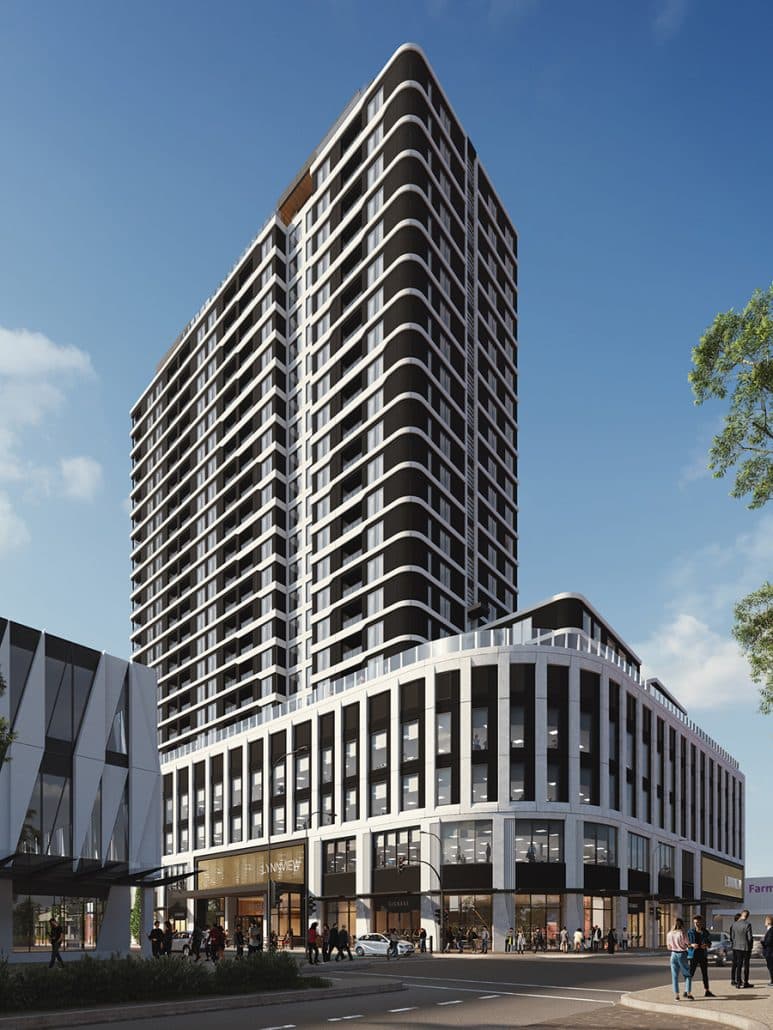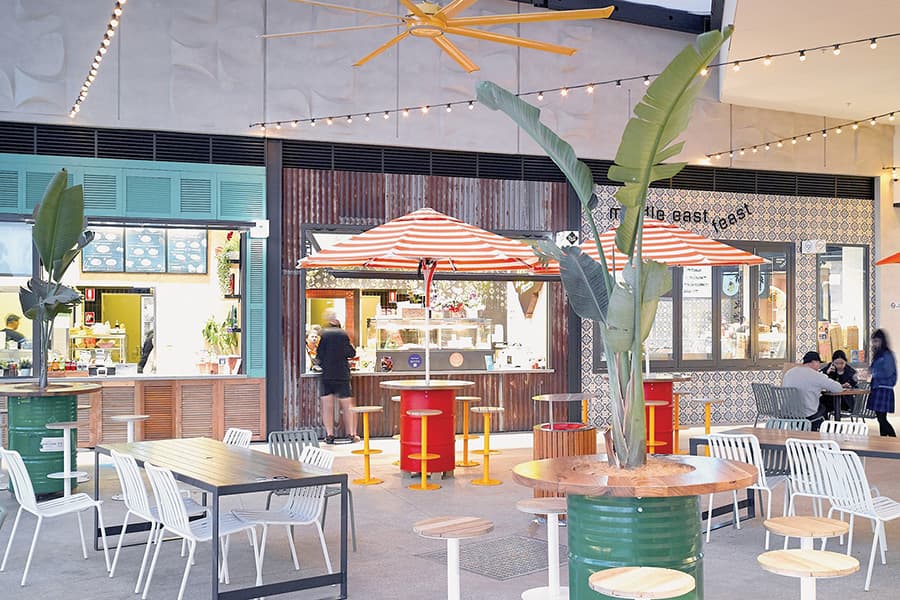In the latest issue of SCN magazine, we bring together insights from key industry partners who play pivotal roles within the shopping centre industry. Through an engaging Q&A, we delve into their strategies, challenges and innovations, offering a behind-the-scenes look at how they are navigating the complexities of this dynamic sector. Here we feature Joseph Wright, Design Director at i2C Architects.
Tell us about i2C and the role it plays within the shopping centre industry…
Formed in 1999, i2C Architects is an award winning architecture practice and regarded as one of Australia’s leading retail specialists. With offices in Sydney, Melbourne, Brisbane and Perth, i2C has spent the past three decades creating vibrant retail centres and communities throughout the country.
In recent years, i2C have expanded its expertise beyond retail and mixed-use developments to include single ownership residential models such as Build to Rent, as well as affordable and social housing.
Together with Ryder Architecture from the UK, i2C is part of the global alliance group Okana, providing a pioneering global built environment consultancy, placing visionary thinking alongside economic viability.
What is your current role and main responsibilities?
I am the Design Director for i2C Architects. As a national role, I’m involved in overseeing the quality of architecture being produced across our studios around Australia. Design is subjective, however ensuring that our projects are innovative and inspiring while remaining grounded in functionality and commercial reality is paramount. Quality control mechanisms such as formal National Design Reviews help ensure i2C’s work remains of a high industry standard and we continue to operate as specialists within the retail and mixed-use sectors.
How did you get started in retail architecture?
I began my journey with i2C Architects almost 20 years ago. I was fresh out of RMIT University and eager to learn the documentation and construction side of things. On reflection, I believe that’s an important first step for any young architect entering the field to help ground them in the reality of building fundamentals and functional design. I relocated overseas for a few years and, in 2011, began working for a practice in central London before returning to Australia. Returning to i2C Architects, I gravitated to designing large-scale community projects, focusing on retail and mixed-use, and eventually began leading the design team in our Melbourne Studio before transitioning to a national role as Design Director.
What do you love most about your job?
I have always been passionate about developing new, vibrant communities. Specifically, I think we have a unique opportunity in our growth areas to create world-class town centres that provide generations of Australians quality spaces to live, work and play. I’ve been fortunate enough to be part of the development of countless neighbourhood centres at i2C over the decades and that catalogue has enabled me to understand why some are arguably more successful than others. Retail is an ever-evolving sector and it’s truly enjoyable to develop masterplans and building designs that respond to the shifts in how people use spaces. Architecture that develops upon emerging technologies to create contemporary communities grounded in climate responsive design is something I love to fight for.

LynnMall, Auckland
Do you have any career highlights, proudest moments, favourite projects?
It’s been a highlight to see i2C take 25 years of retail and community development experience and apply it to the design and development of many new Build to Rent projects around Australia and abroad. The fundamentals of what makes a great town centre apply equally to vertical communities whereby the architecture should primarily help foster community relationships.
I was privileged to be part of the development of some of NZ’s first true Build to Rent projects with one the country’s largest retail developers, Kiwi Property. What I enjoyed, particularly with the Build to Rent mixed-use projects such as LynnMall, was the process of creating an authentic and cohesive relationship between the vertical living, and the existing retail and public realm. It wasn’t about creating insulated residential communities with private amenity, but rather developing a mixed-use model that encouraged the new community to both regenerate the local area and to re-activate the centre. This was achieved by establishing direct transactional relationships between the renters and the existing and new retail/entertainment tenants.
How important is sustainability and ESG in your company’s strategy?
At i2C we’re committed to future sustainability. We’re a certified B Corporation and proud to be part of a community of inspirational companies that are working to make positive and lasting changes on the planet. We advocate for greater sustainability for our projects, but also aim to lead by example in the industry as a Carbon Neutral practice and as active members of Architects Declare and the Living Future Institute of Australia.
We have a responsibility to positively shape our future and focus on people, place and nature to inspire designs. We focus on resource conservation, energy efficiency and negative impacts alongside our commitment to human health and wellbeing, resilience, regeneration, and repair of our ‘whole’ ecosystem. We work with clients to identify and prioritise key sustainability factors and recommend effective design strategies that positively impact people, projects, organisations, communities and our wider global environment.
What do you see as the major challenges facing the industry?
The rising cost of construction has been a major impediment to the development of many projects in recent years. Increased costs in both labour and materials have amplified the pressures on feasibilities and we’re seeing many developers adopt ECIs (Early Contractor Involvement) consequently to help value project costs during the initial phases.
Most communities will expect that a new town centre will include quality congregation spaces, outdoor food and beverage areas and a vibrant public realm in general. While investment in these zones will help yield greater commercial returns for the developer, we often find ourselves fighting to argue the ROI for capital investment in public space. With the aforementioned construction cost pressures, this to me is one of the biggest challenges facing the quality of neighbourhood centre developments.

Eastern Creek Quarter, NSW
What are some of the trends you are seeing in the industry?
We’ve seen a rapid increase of entertainment and lifestyle precincts and food and beverage areas in general over the past decade. The traditionally introverted retail shopping mall model is being reimaged to fit the Australian psyche. While bricks-and-mortar stores remain resilient to the rise of online shopping, we’re now seeing retail centres become synonymous with quality outdoor spaces. Scentre Group has proven time again through the redevelopment of many Westfield destinations that the injection of community focused public space is a key ingredient to creating a contemporary Australian retail centre. In growth area developments like Eastern Creek Quarter, we’re seeing scaled versions of this can be seen successfully applied in new local neighbourhood town centres also.
What do you think makes a successful retail activity centre?
The core objective of a neighbourhood shopping centre is convenience. This goes beyond simply satisfying the major retail anchors as we have an obligation as designers to plan centres in which every shop owner can thrive. Poorly planned centres that compromise passing foot traffic, retail sight lines or create convoluted traffic strategies, for instance, can have profound and long-term effects on both the centre itself and the wider urban interface.
Ultimately, town centres should provide a mix of uses that help satisfy the daily needs of the public, ideally within walking distance of their homes. Town centres should include a vibrant mix of specialty retail, service-based tenants, recreational spaces, medical and early education facilities, as well as food and beverage. Integrating centres with existing public transport networks and bicycle tracks are important ingredients to the adoption of more sustainable transport modes and the development of more climate responsive town centres overall.
It’s critical to understand the wider urban context of the site and who the end user is. This ensures that each project is designed with a sense of identity unique to its place. Town centres represent the heart of a community and it’s paramount that they’re designed and executed with authenticity.
What excites you about the future of the retail industry?
The retail industry has always shown an ability to adapt and morph to changes in the market. As our cities expand, I’m excited to see more activity centres adopt mixed-use approaches with integrated medium and high density living. Increased densification will be a key aspect to creating walkable catchments around activity centres and, ultimately, less reliance on motor vehicles into the future. Our centres are becoming more innovative and climate conscious, and I look forward to developing more retail centres that are designed overall through a regenerative framework. SCN
This exclusive Q&A feature is published in the latest issue of SCN magazine – premium members can view the digital magazine here.





















